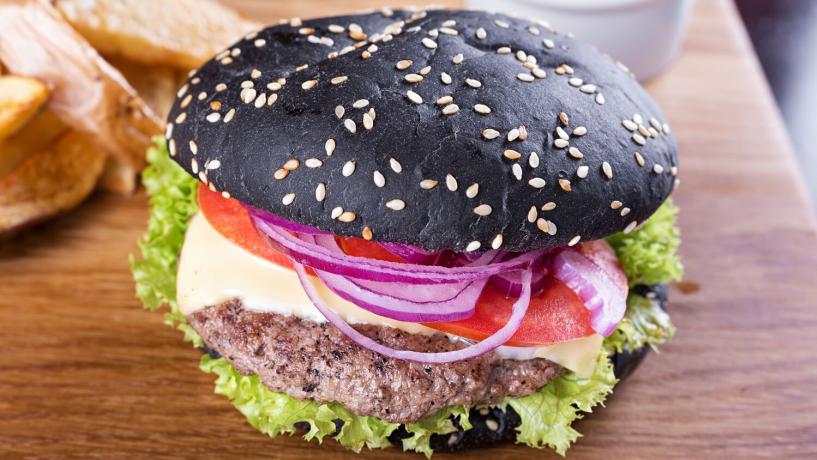
At the end of each year, hundreds of articles are written about what we're all going to be eating for the next twelve months. Whilst these articles make entertaining reading, little attention is paid to food safety.
In this article, we'll explore the trends that are being predicted for 2017 and the food safety implications of each.
1. Coloured Food
The NZ Herald is predicting we'll all be eating purple food, the Weekend Edition is predicting we'll all be eating blackened food, and various other websites are predicting we'll be eating blue, green or orange food. It seems like coloured food is going to be 'in thing' for 2017.
But is coloured food a food safety hazard? Well, the evidence seems to indicate that it may be if chemical food colourings are used. In the last few decades, the Food and Drug Administration (FDA) in the USA has reduced the number of approved food colourings from 80 to 7. Many of the banned food colourings have been taken off the list due to scientific research indicating that the colours may cause intestinal tumours, hyperactivity, cancer, anxiety and migraines. The remaining seven are under close scrutiny for similar adverse effects.
Some of the coloured food being predicted for 2017 is already naturally the colour being predicted (purple carrots, purple kale, purple broccoli). Others will use natural ingredients to colour the food e.g squid ink to make food a black colour.
It's certainly going to be an Instagram-friendly trend but we recommend following common sense - find out where the food colouring came from, and if it's made from a chemical, consume the food in moderation.
2. Insects
Insects have been predicted as the 'next big thing' for a few years now, but they still haven't become mainstream food yet. However, we're seeing insects again on some of the 2017 prediction lists, including this one by the UK's Evening Standard.
Lots of countries already eat insects regularly. Fried bugs are served as a beer snack in parts of Thailand, termites are eaten in Ghana, and Mexicans are known for eating french-fried caterpillars and candy-covered worms. In Australia, many indigenous cultures eat honey-pot ants and witchetty grubs for protein.
So, is it safe to eat insects? In most cases, yes. As long as the insects are cooked thoroughly, they're safe to eat. In fact, they're often safer than other animal products as their small size means that they can reach a higher temperature in the centre of the food for a longer time.
What's more, insects are high in protein but low in fat, making them a great option for the health conscious. Plus they emit 10 times less greenhouse gas than cattle so they're good for the environment too.
Will this trend take off? We're not sure - it remains to be seen whether consumers can get over the 'ick' factor to embrace insects as a food.
3. New Delivery Methods
This one's not really a trend in food ingredients, but rather a trend in how food will be delivered.
Drones are starting to take off (no pun intended!) with Domino's delivering pizza by drone in New Zealand and 7-Eleven in the US delivering Slurpees, chicken sandwiches, donuts and hot coffee by drone.
Drones flying around towns and cities delivering food to consumers can cause obvious challenges. Aviation agencies around the world are scrambling to come up with legislation around drone delivery rules, but is delivery by drone food safe? Well, it all depends on the containers in which the food is transported, as well as the temperature at which it's transported.
Containers for food deliveries need to be tightly sealed to prevent contamination from any pathogens or contaminants (such as insects) in the air or wherever the drone lands.
The containers also need to maintain the food temperature outside of the temperature danger zone. This zone is between 5°C and 60°C and is the temperature range at which bacteria multiply most rapidly and is harmful to human health. Delivery companies already manage this with traditional delivery methods so hopefully, it's just a case of combining drone technology with current delivery technology to keep food safe.
4. Vegetables & Faux Meat
Surprisingly, the humble vegetable has been named on a number of food trend lists, such as this one in Forbes magazine, as a food trend for 2017.
At the Australian Institute of Food Safety, we didn't even know that vegetables had gone out of fashion - but we're wrong according to the team over at Pinterest who've noticed a 336% increase in 'veggies' appearing in their food searches in the last 12 months.
Many 2017 food trend lists are predicting that cauliflower, broccoli and cabbage will be playing a leading role on new menus. An increasing number of vegetarian and vegan-centric restaurants are opening in Australia and throughout the world, with meat-free restaurants already easy to find in most of Australia's major cities.
Then there's the faux meat trend - high-quality meat substitutes made out of non-animal products. North America seems to be leading the way with this. A team of chefs in San Francisco this year worked together to make the Impossible Burger - a bleeding veggie burger that looks and tastes like real meat. Vegetable "butcher shops" are taking off in cities like Toronto and Minneapolis selling meatless meatballs, burgers and sausages.
From a food safety perspective, this trend is positive. Most harmful bacteria grow best in a neutral acidity environment with lots of protein. This means that cooked vegetables typically have poorer conditions for bacteria growth than meat, making cooked vegetables safer to eat and less likely to cause food-borne illness.
5. Byproducts & Food Waste
The last food trend for 2017 on our list is one that we feel passionately about here at the Australian Institute of Food Safety - the reduction of food waste (read about our efforts to help reduce food waste in Australia here).
This one is really set to take off in 2017 according to research conducted by the Whole Foods brand in the US. "Whether it's leftover whey from strained Greek yogurt or spent grains from beer, food producers are finding innovative — and delicious — ways to give byproducts new life," Whole Foods said.
Beet greens, turnip greens, mustard greens, and carrot tops are all items that would traditionally have been thrown out that are now making their way onto restaurant menus around the world.
Other innovative ways of reducing waste that we've heard about include Eco Olea (a US brand) using water from its olive oil production as the base for a household cleanser line, and Sir Kensington's (also from the US) repurposing aquafaba, the liquid drained from canned chickpeas, to make vegan mayonnaise.
And ugly fruits and vegetables that were previously rejected by consumers and food stores are still hitting headlines both in Australia and overseas. Hit campaigns such as the Woolworths Odd Bunch campaign have been encouraging consumers to eat odd-shaped produce, and juiceries have been starting up around the world that only use misshapen fruit and vegetables to make their cold-pressed juices.
From a food safety perspective, there's no real harm in using items that would have traditionally been thrown out - as long as they're handled and prepared just like any other food items, and are used whilst they're still fresh and safe to eat.
Whether you decide to follow these food trends in 2017 or not, always be mindful of food safety and if you're not sure, don't eat it!




